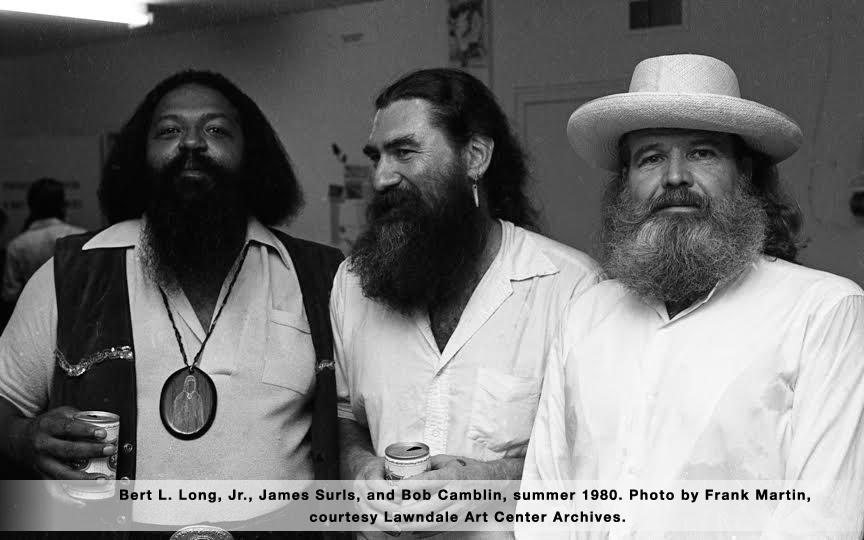
In the 1970s and ‘80s, Houston emerged as a significant city for the arts, fueled by a boom in oil prices and by the arrival of several catalyzing figures including museum director James Harithas and sculptor James Surls. Harithas was a pioneer in championing Texan artists during his controversial tenure as the impassioned, uncompromising director of the Contemporary Arts Museum Houston. He put the state’s native artists on the map, but his renegade style was too hot for the museum’s benefactors to handle and after four years of fist fights and floods (and of course, some groundbreaking programming by both Texans and artists of international stature, including John Chamberlain, Norman Bluhm, Salvatore Scarpitta, and Julian Schnabel), he wore out his welcome at the museum.
After Harithas’ departure from the CAMH, the chainsaw-wielding Surls established the Lawndale Annex as a largely unsupervised outpost of the University of Houston’s art department. Inside this dirty, cavernous warehouse, a new generation of Houston artists found itself and flourished. Both enterprises set the scene for the emergence of an array of small, downtown artist-run spaces including Studio One, the Center for Art and Performance, Midtown Arts Center, and DiverseWorks. Through it all, the members of formally and informally organized groups such as the Houston Women’s Caucus for Art, the Urban Animals, and the Core Residency Program supported and challenged each other’s creative pursuits. Finally, in 1985, the Museum of Fine Arts, Houston presented Fresh Paint: the Houston School, a nationally publicized survey of work by Houston painters. The exhibition capped an era of intensive artistic development and suggested the city was about to be recognized, along with New York and Los Angeles, as a major center for art- making activity. The mid-‘80s oil bust temporarily sapped the scene of energy and resources, but the seeds had been sown for the vibrant visual arts community that enriches Houstonians’ lives today.
For this project, author Pete Gershon draws upon primary archival materials, contemporary newspaper and magazine accounts, and over 60 interviews with significant figures to present a creative non-fiction narrative that preserves and interweaves the stories and insights of the artists, collectors, critics, patrons, and administrators who transformed the city’s art scene. What were the highlights, the detours, the noble failures? How did the city influence these artists, and how did they in turn influence life in the city? How did contemporary art activity in Houston reflect, oppose, or presage trends in the regional and national arts communities? Was there really any such thing as a “Houston school,” and if so, what was it?
The final product will be a richly illustrated art book, packed with color reproductions of key works and lesser-known pieces, as well as ephemera and previously unpublished archival photography drawn from the archives of the Museum of Fine Arts, Houston; the Contemporary Arts Museum Houston; Lawndale Art Center; the Houston Metropolitan Research Center at the Houston Public Library; University of Houston Libraries’ Special Collections, the Woodson Research Center at Rice University, and numerous private collections. An initial print run of 2500 copies is anticipated, with a release date in 2018. A series of exhibitions of artwork alongside documentation from area art archives is planned for the Glassell School of Art, Lawndale Art Center, and additional venues in conjunction with the book’s publication.
Pete Gershon is the author of Painting the Town Orange: Houston’s Visionary Art Environments (History Press, 2014) and the program coordinator for the Core Residency Program at the Glassell School of Art. For 15 years, he was the publisher of Signal to Noise: the journal of improvised and experimental music. He earned a Master’s Degree in Library Science from the University of North Texas (2015) and a BA in creative non-fiction from Hampshire College (1995).
Please Donate here for “Collision” by Pete Gershon